SKOWHEGAN — Ambrose “Tom” McCarthy says business is good this year at his company, Central Maine Wreath.
No, it’s not just the warm weather for the two dozen or so “fir tippers” bringing in the balsam harvest. And no, it’s not that Mainers have more Christmas spirit than usual this year, or that the season’s first significant snowfall has arrived.
It’s all about the economy. Pay your employees a better wage and the return is better production.
As a result, people are seeing green in more ways than one this year.
“I think on Friday I paid 35 people,” McCarthy said last week of his sprawling wreath-making operation, housed in eight buildings on North Avenue in Skowhegan. “It’s a very good year. I increased the (hourly) wages to the employees substantially — from $7.50 to $10 or $11.
“They were working too cheap. We’re asking people to work for $7.50 an hour, which is a starvation wage. They work too hard to be treated that way. We paid them more this year than we had to and we got better workers — better pay, better workers. Same thing with the tips — better pay for the tips and more tips, better production.”
The minimum wage in Maine as of Jan. 1, 2017, is $9 an hour.
The “tips” McCarthy refers to are the 12-to-18-inch balsam fir tree branches collected in the woods and along roadsides and private property and layered onto long sticks for delivery. Bundles of tips are weighed and the tipper is paid.
The tips are then made into wreaths in a long workshop inside an insulated Quonset hut behind McCarthy’s retail store, ready for sale at the store or for shipment by the U.S. Postal Service or by private carrier.
This year McCarthy projects he will take in 140,000 pounds of fir tips, which translates to about 22,000 feet of garland and about 20,000 wreaths.
David Fuller, a wreath professional at the University of Maine Cooperative Extension Service, said it’s hard to know the full economic impact of fir tipping and wreath making, as the industry is not monitored by the state.
“Nobody keeps track,” Fuller said. “I’m guessing — just a fairly educated guess — a million to a million and a half wreaths are made a year in Maine. There’s no state entity that collects that data, because I don’t think it’s forthcoming, which makes it really difficult to know its importance in the state. It’s a very competitive business, so it tends to be a little private, or guarded.”
Despite a lack of state data, the tip harvesting and transport process is highly regulated under Maine law. Violations could include arrest on felony charges, said Scott Maddox, a forest ranger with the Maine Forestry Service.
State law requires each tipper to get written permission from a landowner where the tips are collected. McCarthy supplies each of his field tippers with a landowner permit form, certifying that the owner has agreed to allow the tipper to work on his or her property.
“We do the enforcement of the law,” Maddox said by phone this past week. “There are laws pertaining to the cutting and transporting of Christmas trees and evergreen boughs.”
Spoken permission is not enough to satisfy the letter of the law, Maddox said. Tippers are advised to keep the filled-out permit with them while they are out working. Violations range from misdemeanor charges of illegally harvesting or transporting fir tips valued at under $2,000 to class C and class B felony charges for fir tips valued at more than $2,000 and $10,000, resulting in possible hefty prison terms, Maddox said.
“It’s a very large industry in Maine, a lot of wreaths are sold and it’s a huge boon to the holiday season economy. That’s why the penalties are so serious, because it does have such a huge impact on the economy,” he said.
Maddox said landowners whose property is tipped illegally can lose financially and asthetically, especially if illegal tippers cut down fir trees to get to the boughs. He said good tippers will tip an area responsibly so they can keep going back year after year.
McCarthy is paying 45 cents for a pound of balsam fir tips this year and it takes about 6 pounds, including waste, to make a decent 12-inch wreath. McCarthy paid 35 cents a pound in previous years.
A good tipper can make $200 a day, McCarthy said — or about $1,000 for a five-day week from early November until Christmas.
“We probably put $150,000 to $200,000 back in the Skowhegan economy, with labor in here and the crew,” he said.
The fir tips are delivered and weighed on state-certified scales in the receiving yard at McCarthy’s, then hauled to teams of wreath makers in the Quonset hut who snap the fir branches for small machine operators who apply wire to hold the tips onto steel rings of various sizes.
The process is called “breaking tips for the maker,” said employee Kalee Salisbury, stacking short cuts of fir next to the whirring machine, one of about a dozen winders.

Chris Skidgell, one of many local people who benefit from holiday work underway at Central Maine Wreath company in Skowhegan, unloads heavy bunches of fir tips onto a scale Nov. 28 to be weighed.
Melinda York, who has worked for McCarthy making wreaths for the past 29 years, said she comes back every year because it’s a good place to work.
“I come back for something to do and for Christmas money,” she said. “It varies every year, but I make between $1,500 to $1,800. I’ve gotten better over the years. I used to not do very good. Now I make six to eight dozen wreaths a day. It’s very hard work.”
McCarthy’s products supply Christmas decorations for the municipalities of Kennebunk, Augusta and Rockport; a motel in York Beach; and a big order for Sugarloaf, he said. Workers add holiday-themed bows to the wreaths and specialty items such as pine cones, winterberries and sprigs of wheat.
“We’ve got the best selection of any wreath company within miles,” McCarthy said.
One customer, Polly Kent, of B&F Veggies on China Road in Winslow, said she has been buying decorations from Central Maine Wreath for probably 20 years.
“I get wreaths, I get crosses and I get garland,” she said. “I think the wreaths here are wonderful. I’m here every year. They’re really nicely made and he’s always on top of it, and I can get anything I want.”
McCarthy says he uses only clean, green balsam fir tips.
Balsam fir has dark green, blunt-ended needles that are about 1 inch long, according to a University of Maine Cooperative Extension Service publication. Spruce looks similar to balsam fir but has shorter needles with pointed ends. This makes the needles “prickly” to the touch. Hemlock also might be mistaken for balsam fir, but it can be identified by its short, blunt needles and by two white stripes on the needle’s underside.
Barbara King, who decorates wreaths in the main showroom, said moose- and deer-themed bows are the most popular with customers who drop by.
“We decorate to their liking,” King said of the made-to-order Christmas wreaths. “Some people like the natural stuff, the cones and milkweed and berries.”
McCarthy, 74, has been selling Christmas wreaths and trees for 38 years, starting with selling wild trees for $5 or $6 apiece in 1979. One customer asked him if he could come up with 100 wreaths that year, and it grew from there.
Nowadays, McCarthy said, he likes to bring coffee and doughnuts to the workers and treat them to pizza or Chinese food once a week to make sure he maintains a good crew for the whole season. He said that pays off in the end with a good product and good production.
“You got to treat good people good,” he said.
Doug Harlow — 612-2367
Twitter:@Doug_Harlow
Copy the Story Link
Send questions/comments to the editors.


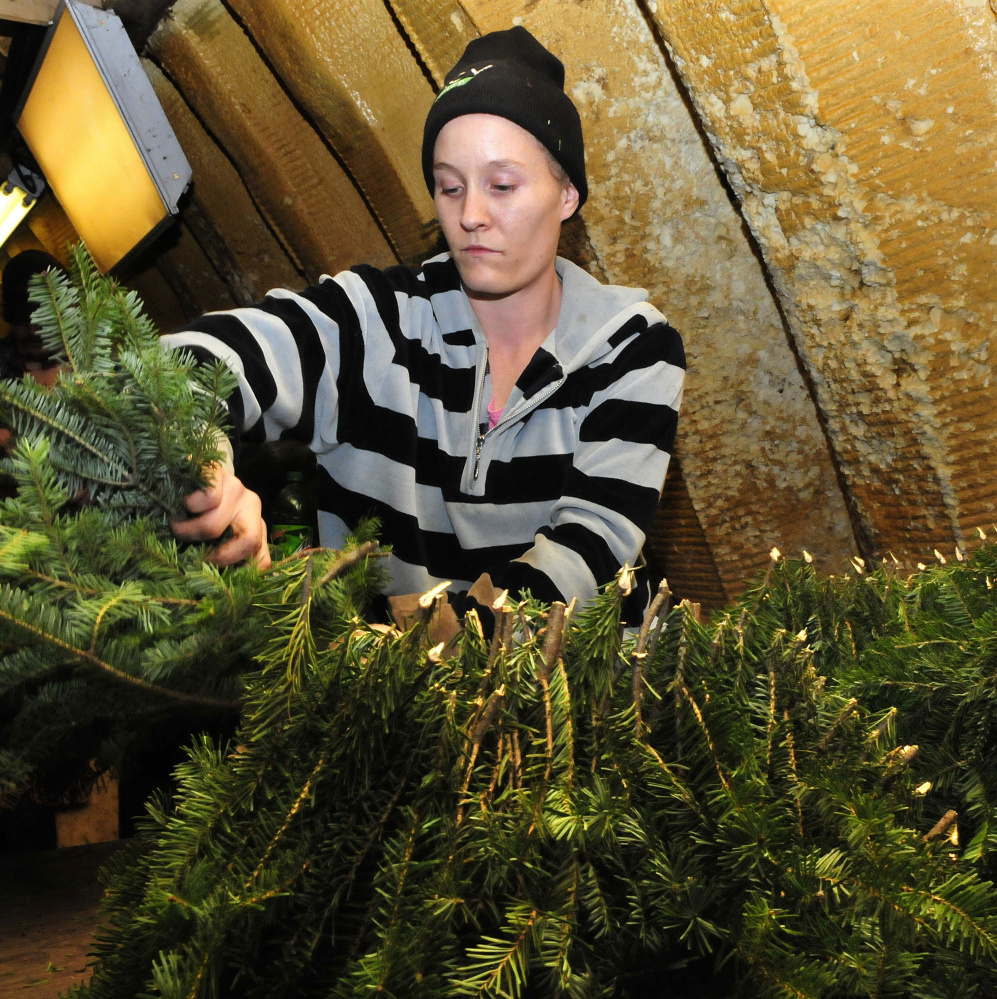
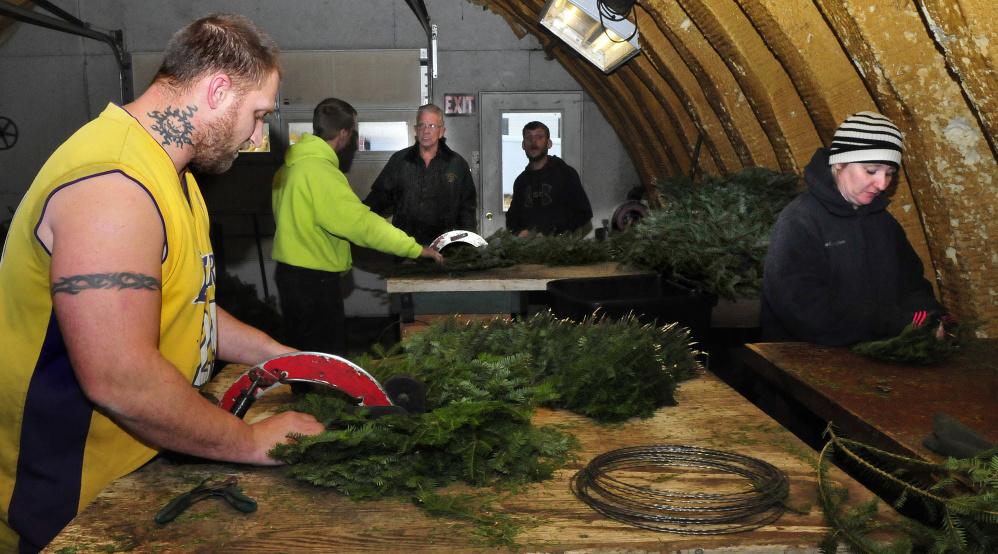
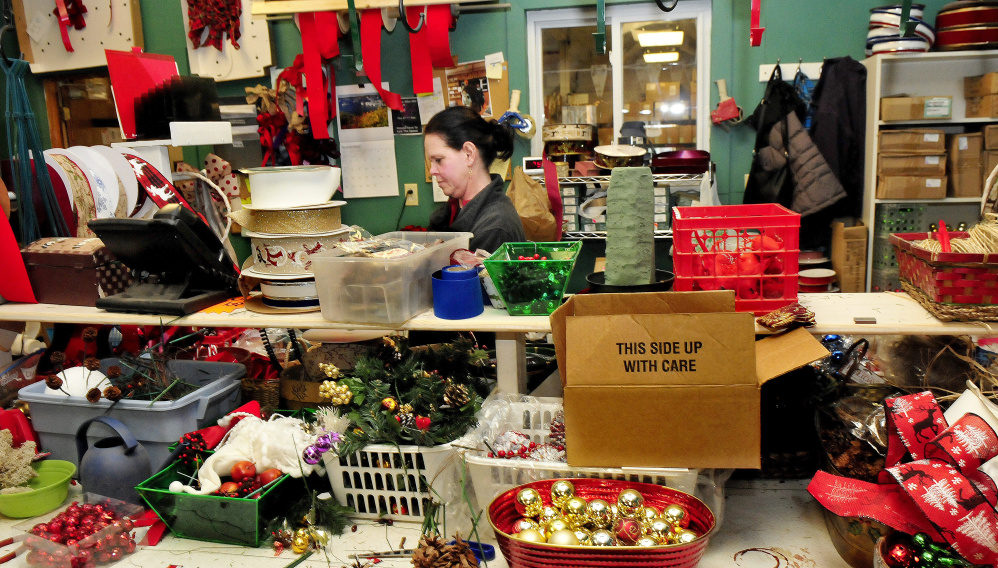
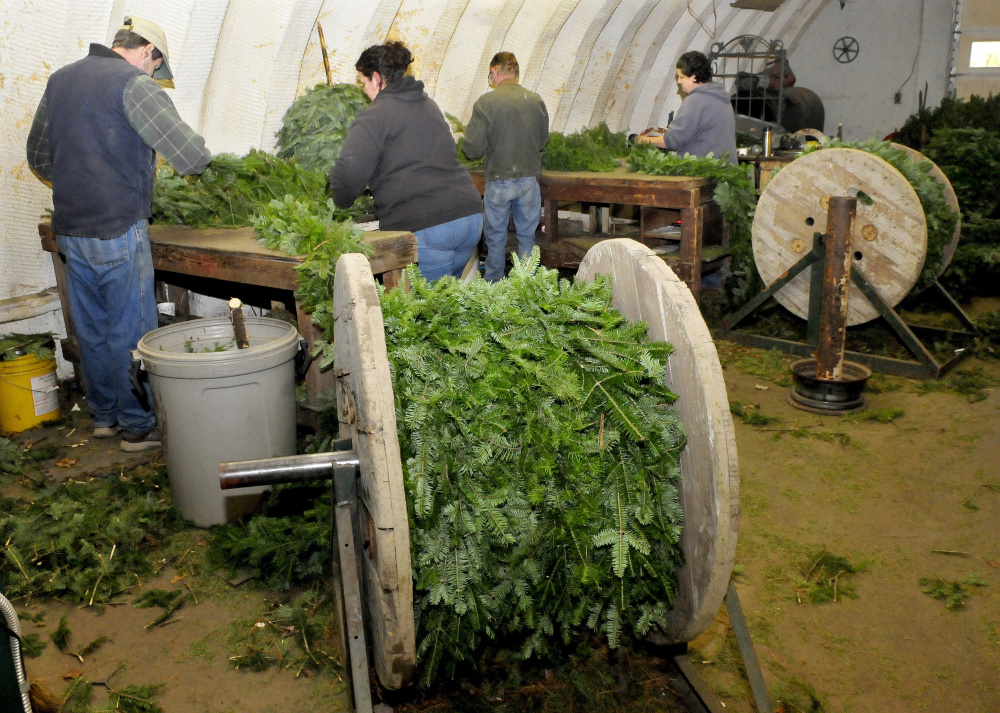
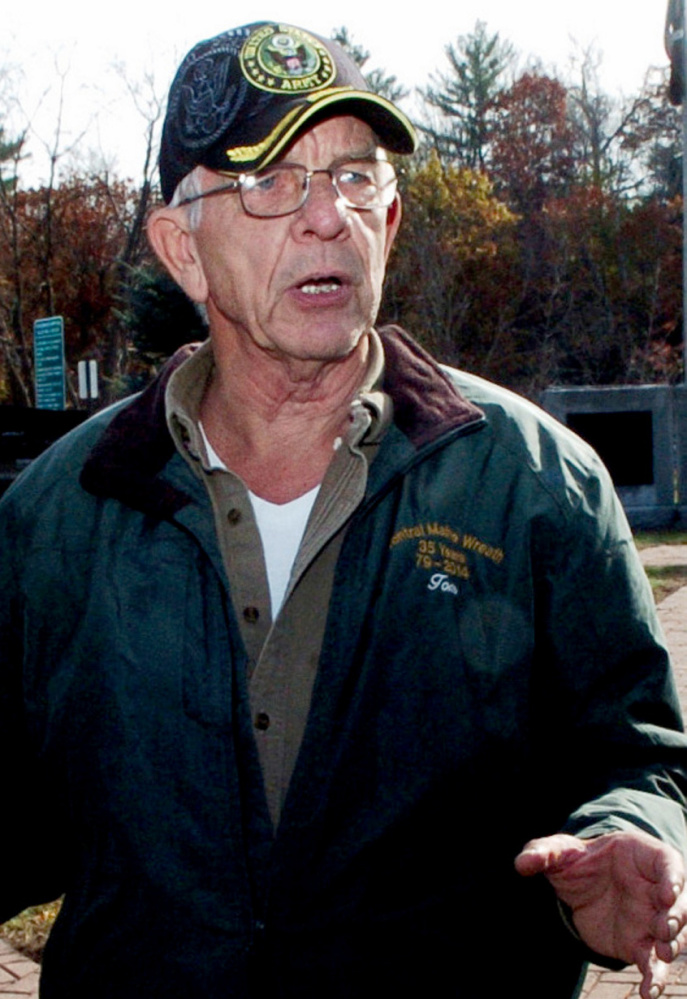

Success. Please wait for the page to reload. If the page does not reload within 5 seconds, please refresh the page.
Enter your email and password to access comments.
Hi, to comment on stories you must . This profile is in addition to your subscription and website login.
Already have a commenting profile? .
Invalid username/password.
Please check your email to confirm and complete your registration.
Only subscribers are eligible to post comments. Please subscribe or login first for digital access. Here’s why.
Use the form below to reset your password. When you've submitted your account email, we will send an email with a reset code.